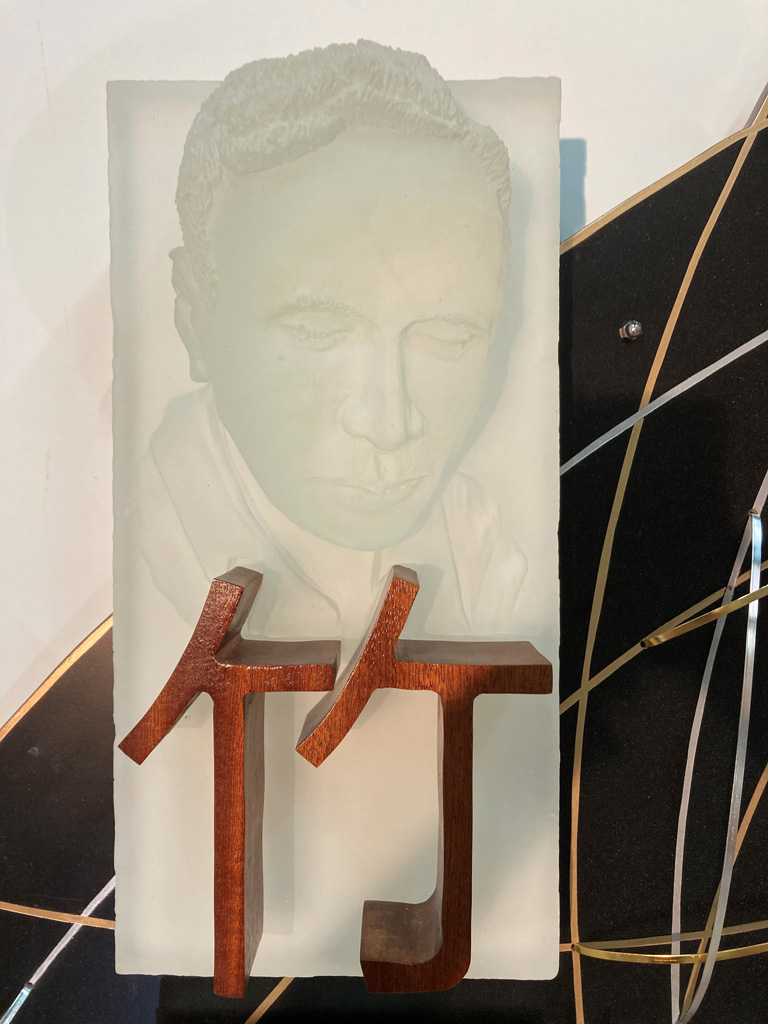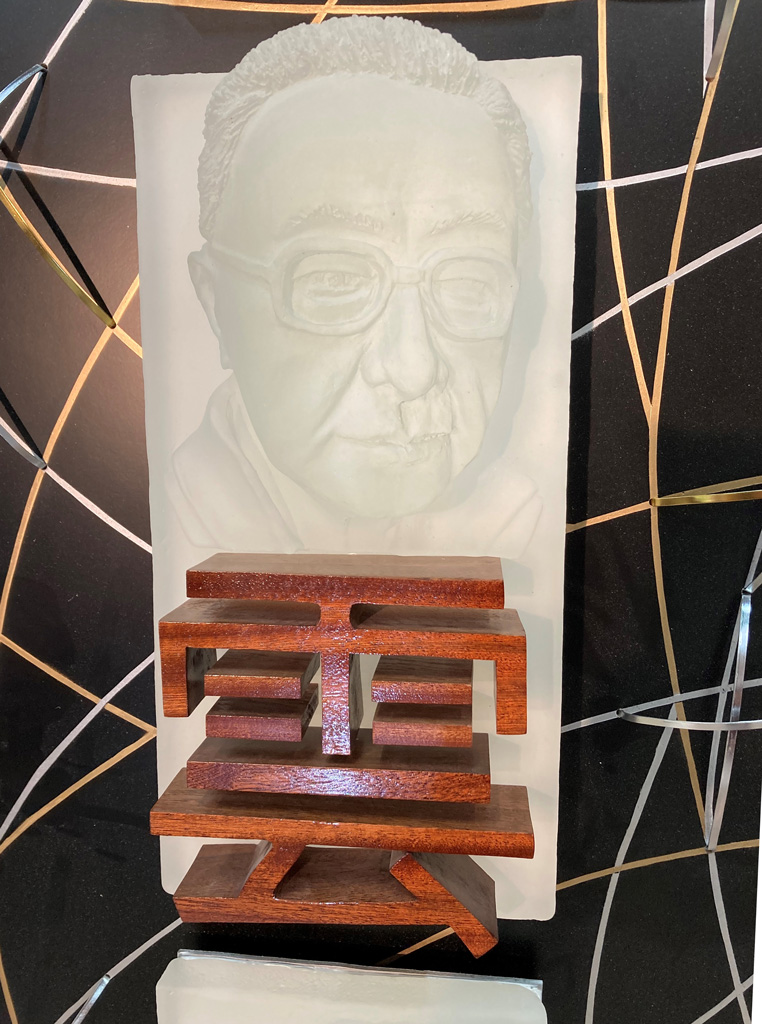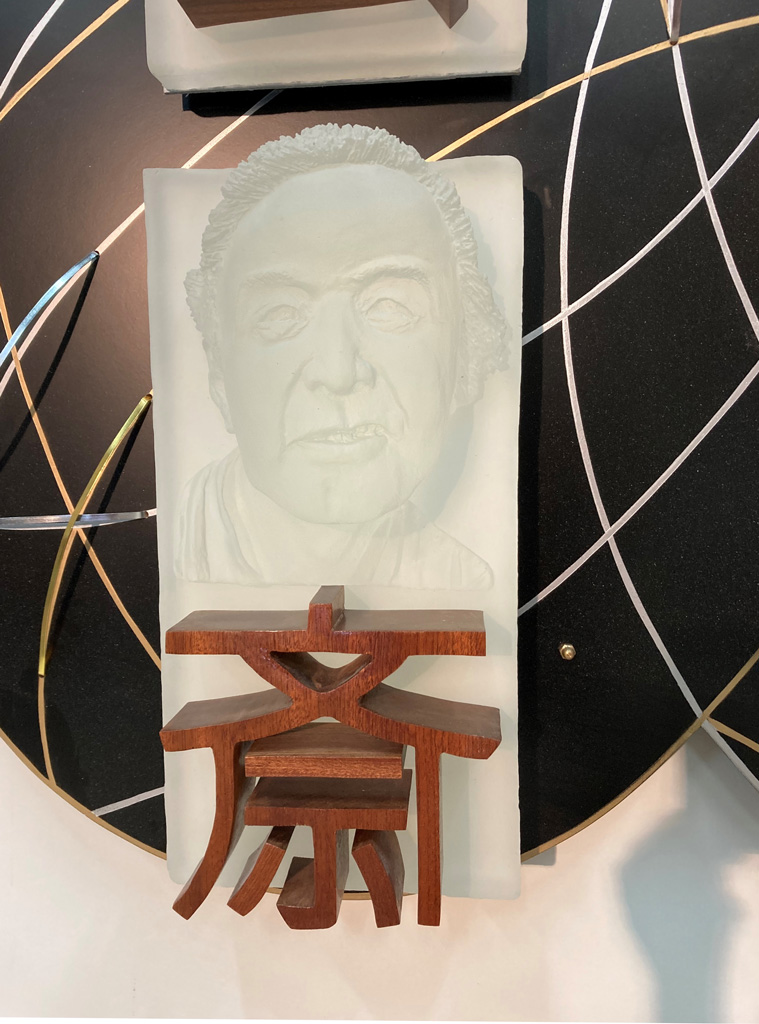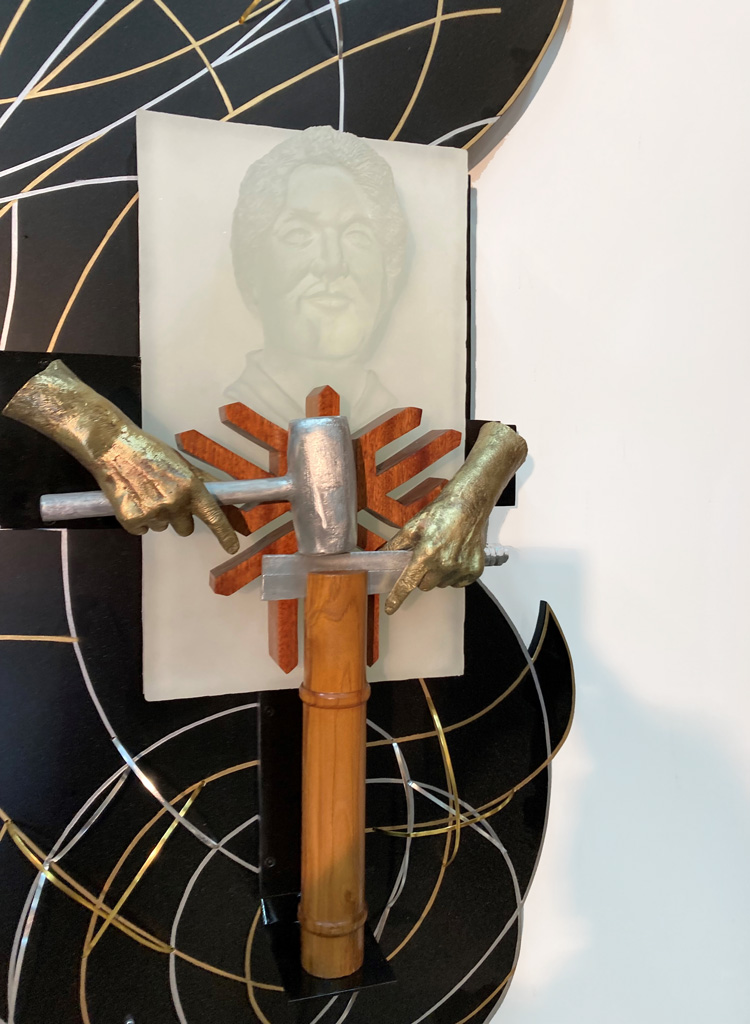The Great Chain of Creation, Four Generations of Tanabe Chikuunsai
Materials Cast glass, cast bronze, cast aluminum, wood, flat aluminum and brass wire
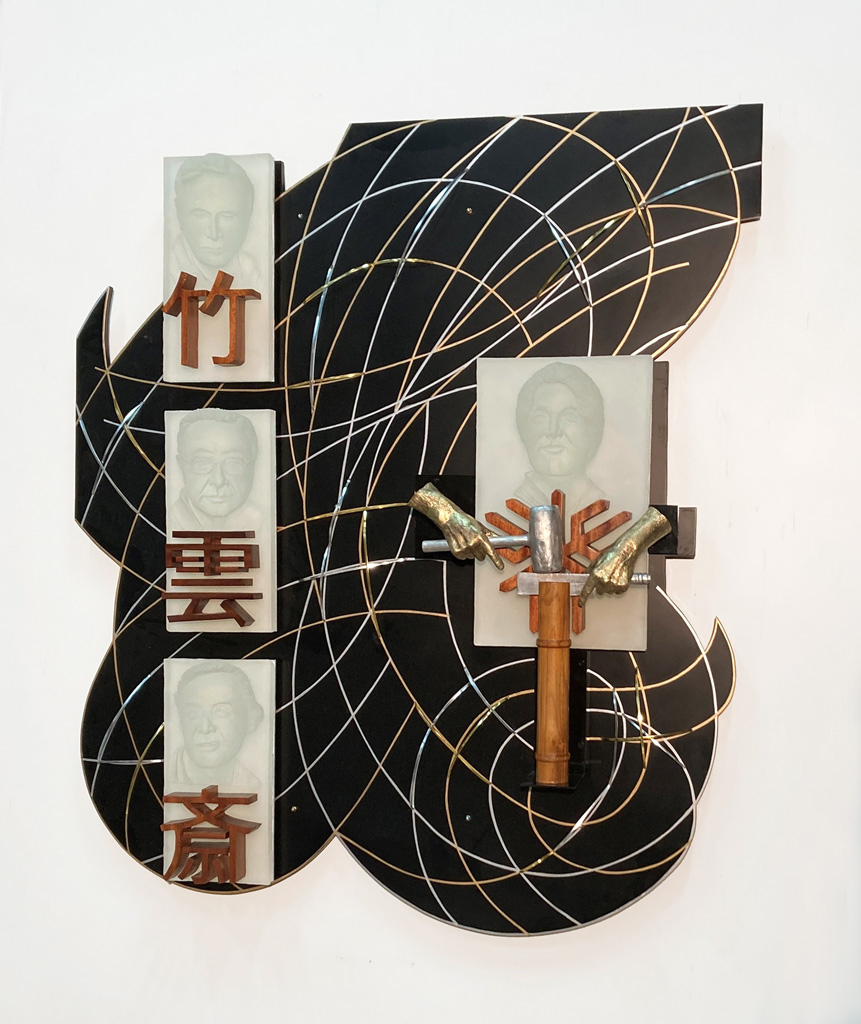
I am attracted to the passing of skills from parents to their offspring having learned the hand skills and the desire for excellence from my father. This sculpture is a family history beginning in the late 19th century. Tanabe Tsuneo, born in 1877 was the son of a doctor. He began at an early age to show interest in the work of his neighbor, a basket maker. At the age of 12 he became apprenticed to a master in bamboo art, Wada Waichisai. Here he trained in and practiced the traditional techniques. At the age of 24 he opened his own workshop and his master gave him the name Chikuunsai (bamboo cloud).
Born in 1910 Tanabe Shochiku (little bamboo) learned as a disciple of his father and later on practiced the art of basketry in the Chinese style working in Osaka and Sakai. In 1937 when his father died he took the name Chikuunsai ll and changed his style from works that were quite dense to those that were lighter, more open and sculptural.
Generation three began in 1940 with the birth of Hisao, he was the first of the family to attend university following which he trained with his father and Tsukayoshi Tadayoshi. In 1969 his father gave him the name Shochiku ll and in 1991 his father ceded his workshop to him and bestowed the name Chikuunsai lll and took the name Itchikusai for himself. The work of Chikuunsai lll distinguishes itself from earlier members of his family by following a more contemporary style and deviating much more towards non utilitarian forms on one hand, while maintaining the age old traditions on the other.
The family with deep roots in Sakai in the Osaka prefecture continued its legacy in 1973 with the birth of Takeo. Studying at Osaka City Crafts High School and then receiving a degree in sculpture from Tokyo Art University he then settled into the workshop of his father. First obtaining the first name Shochiku lll. In his case he waited three years after the death of his father in 2014 to assume the name Chikuunsai lV. He has developed an international reputation with his monumental installations of woven tiger and black bamboo at the Metropolitan Museum in New York, Japan House in Sao Paulo, Brazil, and the Musée National des Arts Asiatiques-Guimet in Paris.
The family tradition continues and his now 11 year old daughter, has begun to give demonstrations. Who knows, maybe she will become Chikuunsai V.
The 3 wood Japanese letters from top to bottom spell Chikuunsai and the wood symbol with the remaining figure is that of the family home Sakai in the Osaka Prefecture.
